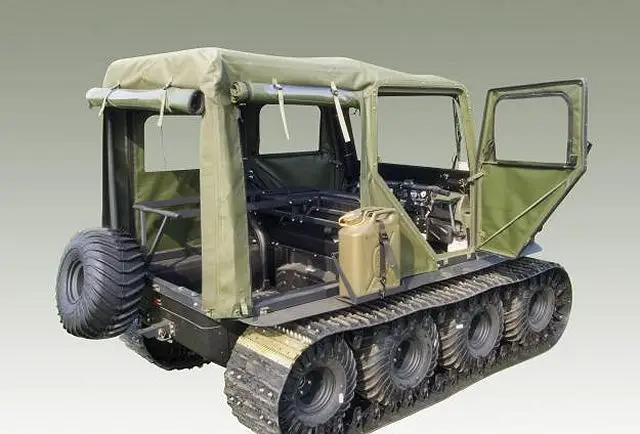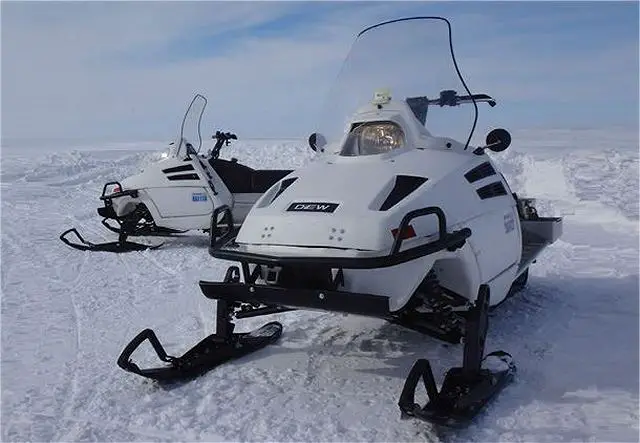Canadian army has purchased all-terrain vehicles Argo XT and D900 to be used in Arctic Region 10603162
|
|
|||
|
Military Defense Industry Technology - Argo XT
|
|||
|
|
|||
| Canadian army has purchased all-terrain vehicles Argo XT and D900 to be used in Arctic Region. | |||
|
The Canadian Army (CA) is working with two new vehicles in a long-term effort to ensure soldiers are able to move effectively across the difficult Arctic terrain. The CA purchased eight of the Argo XT, a tracked small unit support vehicle, and 20 of the D900, a diesel-powered snowmobile in what is being referred to as a “buy and try” arrangement.
|
|||
|
|
|||
 Deployable, dependable, adaptable -- ARGO XTVs, a versatile light vehicle platform, are the affordable solution for a host of military requirements. Deployable, dependable, adaptable -- ARGO XTVs, a versatile light vehicle platform, are the affordable solution for a host of military requirements. |
|||
|
|
|||
|
As Major Peter Chan, director of the CA’s ongoing Arctic Mobility Project explained, the Army is not planning to make these vehicles a permanent part of its arsenal. Their use will instead help in determining what specific features and capabilities will best serve its needs in the far north. The Arctic’s isolation and climate have always presented challenges to the Canadian Armed Forces (CAF), Maj Chan said. The region has a great deal of what he calls “marginal terrain,” meaning ice sheets, various types of snow and muskeg, an Algonquin term for the grassy bogs formed over the past 10,000 years in areas that were covered by glaciers in the last ice age. “Basically just a very wide variety of terrains,” said Maj Chan. “Too many for one vehicle.” Under the current project timeline, new vehicles will be in service by 2025. They will replace the BV206, a tracked, all-terrain transport vehicle that first entered service in 1983. The BV206 fleet was upgraded between 1998 and 2001. Funding to further extend its active life to at least 2022 by replacing engines and transmissions was recently approved. Despite those upgrades, Maj Chan explained, the fleet’s age means replacement parts are getting harder to come by and so the Army is acting now to ensure effective replacements are selected in a timely manner. The Argo XT and D900 will also fill any interim needs arising before the new vehicles arrive in 2025. Half of the Argo XTs are in use in Yellowknife, Northwest Territories by members of the CAF’s Joint Task Force North and the rest are at Canadian Forces Base Wainwright in Alberta. Manufacturer Argo, which also builds vehicles for commercial and personal use and is based in New Hamburg, Ontario, has adapted the XT for CA roles by adding an enclosed cab, a kit that enables it to carry stretchers, and a military fuel can holder. “We’re going to trial them in those locations and assess what the capabilities are in marginal terrain to help us define our real, high level mandatory requirements for future purchases,” said Maj Chan.
|
|||
|
|
|||
 The D900 Multifuel is a robust military grade vehicle that provides off road, over-snow mobility in Arctic, Northern and Alpine environments. The D900 Multifuel is a robust military grade vehicle that provides off road, over-snow mobility in Arctic, Northern and Alpine environments. |
|||
|
|
|||
|
The D900, built by Ottawa-based DEW Engineering and Development, is unique among snowmobiles in that it is purpose-built for military use. Its diesel engine, Maj Chan added, also provides greatly increased fuel efficiency, which is a major consideration in Arctic operations.
“Few manufacturers make a diesel snowmobile and fuel is a precious commodity up north so we’re assessing how a diesel machine works in the Arctic environment. Anything we use up in the northern region we have to bring with us. It’s not as simple as going to the gas station and filling up.” Over the course of winter 2015-2016, the D900 will be used by Canadian Ranger patrols and as part of the Army’s Arctic Observer and Advisor Course, in which soldiers receive Arctic-specific survival training. The D900 and the ARGO XT will also be tested by Defence Research and Development Canada (DRDC), an agency of the Department of National Defence. The vehicles will be part of the 2016 Joint Arctic Experiment (JAE). Taking place every two years, the JAE is an opportunity to scientifically assess equipment from all three branches of the Canadian Armed Forces. While the Army assesses the vehicles’ suitability to the environment, Maj Chan explained, DRDC will be making more technical assessments of features such as fuel economy. “For 2016, the Army’s JAE contribution will be those two vehicles,” he said. “DRDC will look at them from a purely scientific point of view whereas I’m just looking at it from a global army perspective.”
|
|||




























